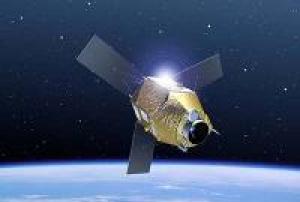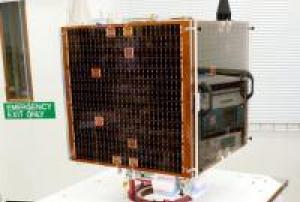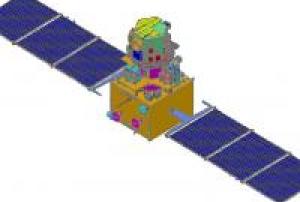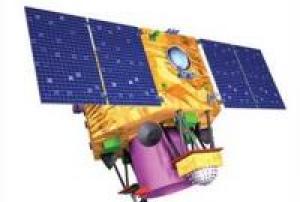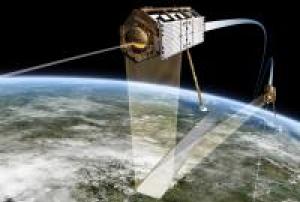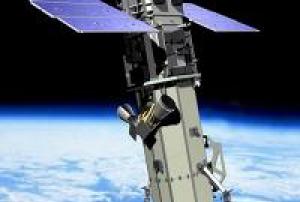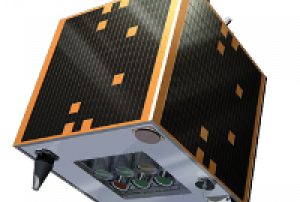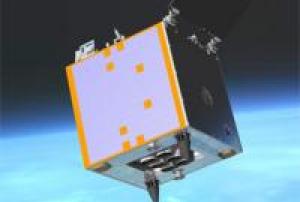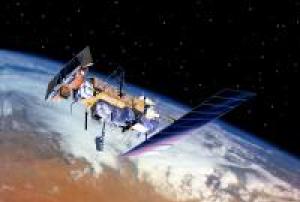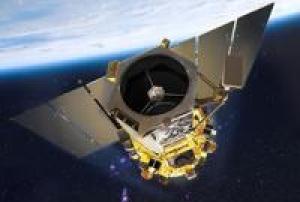Glacial Lake Outburst
Definition
Facts and figures
Further information
UN-SPIDER Regional Support Offices with hazard-specific expertise
Related content on the Knowledge Portal
Launched in December 2011, Pleiades is a constellation of two very-high-resolution satellites capable of acquiring imagery of any point on the globe in under 24 hours for civil and military users.
read more
Pleiades has been observing and mapping Earth’s surface at a resolution of just 70 cm every day since December 2011. Comprising the Pleiades 1A and Pleiades 1B satellites, this space imaging system complements the capabilities of the SPOT satellites, which have a wider field of view than Pleiades but lower spatial resolution. What’s more, as Pleiades 1A and 1B are in the same orbit, together they can image anywhere on Earth in less than 24 hours. Pleiades imagery is used for both civil and military applications, for example to track urban expansion, monitor the planet’s active volcanoes or assist road and railway routing, and to locate adversaries’ military installations for mission planning. Pleiades’ key asset is an extremely sensitive optical…17/12/2011NASRDA (National Space Research & Development Agency) of Abuja, Nigeria has continued its association with SSTL, with two parallel projects - the NX and NigeriaSat-2. Like NigeriaSat-1, NX is based on the SSTL-100, but is being developed by a team of 26 Nigerian trainee engineers at SSTL's facilities in England. The Nigerian engineers will completely manage the total lifecycle of the NX and will be responsible for the delivery of the satellite to full flight specification.
read more
Capacity building is central to the implementation of the Nigeria Space Program. As part of the Know-How Technology Training (KHTT) on the NigeriaSat-2 satellite project is the development of a training model (TM) named NigeriaSat-X. The TM will be used to give the KHTT’s hands on experience in the requirements specification, project management, system engineering, manufacture, test, assembly / integration and final system testing of a spacecraft. Unlike the…17/08/2011ResourceSat-2 is a data continuity mission of ISRO (Indian Space Research Organization) with improved spectral bands of the IRS-P6/ResourceSat-1. Each ResourceSat satellite carries three electrooptical cameras as its payload: LISS-3, LISS-4 and AWiFS. All the three imagers are multispectral pushbroom scanners with linear array CCDs as detectors.
ResourceSat-2 provides continuity and increases the observation timeliness (repetivity) in tandem with ResourceSat-1.
Additionally, the satellite carries an AIS payload for exactEarth (COMDEV), which is known as exactView 2 (EV 2).
Resourcesat-2 was launched in April 2011.Instruments:
read more
AWiFS (Advanced Wide-Field Sensor)
LISS-III (Linear Imaging Self-Scanning Sensor)
S-AIS (Satellite-based Self-Scanning Sensor)
LISS-IV Camera20/04/2011Cartosat-2 is an advanced remote sensing satellite with a single panchromatic camera (PAN) capable of providing scene-specific spot imageries for cartographic applications. The camera is designed to provide imageries with better than one meter spatial resolution and a swath of 10 km. The satellite will have high agility with capability to steer along and across the track up to + 45 degrees. It will be placed in a sun-synchronous polar orbit at an altitude of 630 km. It will have a revisit period of four days. The re-visit can be improved to one day with suitable orbit manoeuvres.
Several new technologies like two mirror on axis single camera, Carbon Fabric Reinforced Plastic based electro optic structure, lightweight, large size mirrors, JPEG like data compression, advanced solid state recorder, high-torque reaction wheels and high performance star sensors are being employed in Cartosat-2.
Instrument: PAN (…
read more12/07/2010The TanDEM-X mission will survey all 150 million square kilometres of Earth's land surface several times over during its three-year mission. Apart from its high measuring-point density (a 12-metre grid) and high vertical accuracy (better than two metres), the elevation model generated by TanDEM-X will have another unrivalled advantage – being entirely homogenous, it will serve as a basis for maps that are globally consistent. Conventional maps are often fragmented along national borders, or difficult to reconcile as they are based on different survey methods or because of time lags between survey campaigns. Together TanDEM-X and TerraSAR-X are form the first configurable synthetic aperture radar interferometer in space. Besides this primary goal, the mission has several secondary objectives based on new and innovative methods such as along-track interferometry, polarimetric synthetic aperture radar interferometry, digital beamforming and bistatic radar. The TanDEM-X…
read more21/06/2010WorldView-2 (WV2) is a commercial imaging satellite of DigitalGlobe Inc. of Longmont, CO, USA (follow-on spacecraft to WorldView-1). The overall objective is to meet the growing commercial demand for high-resolution satellite imagery (0.46 cm Pan, 1.8 m MS at nadir - representing one of the highest available spaceborne resolutions on the market).
In the fall of 2003, DigitalGlobe had received a contract from NGA (National Geospatial-Intelligence Agency) of Washington DC to provide high-resolution imagery from the next-generation commercial imaging satellites. The contract award was made within NGA's NextView program. The NGA requirements called for imagery with a spatial resolution of 0.5 m panchromatic and 2 m MS (Multispectral) data.
The WorldView-2 sensor provides a high resolution panchromatic band and eight (8) multispectral bands; four (4) standard colors (red, green, blue, and near-infrared 1) and four (4) new bands (coastal,…
read more08/10/2009The Deimos-1 mission is fully owned and operated by Deimos Imaging (DMI), an UrtheCast company. Deimos-1 satellite was successfully launched on 29 July 2009 from the Baikonur Launch Complex (Kazakhstan) in the Russian-Ukrainian Dnepr launcher. The mission is fully dedicated to Earth Observation and captures images all around the world. Thus, currently the Deimos-1 system provides capabilities well above and beyond the design goals.
The payload is a three-band multispectral imager system with 22m Ground Sample Distance (GSD) at nominal altitude (663 km) with 625 km swath, 8 or 10 bits radiometric depth available. Imager delivers data in three spectral bands, very close to the Near-Infrared (NIR), Red (R) and Green (G) bands in the Landsat series of US satellites. The satellite payload is a dual bank linear CCD push broom imager, so that banks are mounted at an angle to provide a wide imaging swath, one of the most characteristics Deimos-1 features.Renamed to Geosat-1…
read more29/07/2009UK-DMC2 is based on the SSTL-100 satellite platform and was launched in 2009 for the commercial imaging company, DMCii (a subsidiary of SSTL). It provides high resolution (22m) imagery from a sun-synchronous orbit over very large areas (650km swath, 2000km along track), with a daily revisit to global targets.
The UK-DMC2 satellite carries a multispectral optical instrument with a spatial resolution of 22 m with three spectral bands (red, green, NIR) and a wide swath of more than 600 km. UK-DMC2 operates within the Disaster Monitoring Constellation, the first Earth observation constellation of low cost small satellites providing daily images for applications including global disaster monitoring. The Disaster Monitoring Constellation is coordinated by DMC International Imaging Ltd (DMCii) for disaster response within the International Charter: Space & Major Disasters.Instrument: SLIM6-22
read more
- compact imager with 22m GSD at 686km orbital height…29/07/2009NOAA-19, designated NOAA-N' (NOAA-N Prime) prior to launch, is the last of the United States National Oceanic and Atmospheric Administration's POES series of weather satellites. NOAA-19 was launched on February 6, 2009.
On November 4, 2008, NASA announced that the satellite had arrived at Vandenberg aboard a C-5 Galaxy military transport aircraft. Installation of the payload fairing took place January 27, 2009; second stage propellant was loaded on January 31.
Several attempts were made to conduct the launch. The first attempt was scrubbed after a failure was detected in a launch pad gaseous nitrogen pressurization system. The second attempt was scrubbed after the failure of a payload fairing air conditioning compressor, which is also part of the ground support equipment at the launch pad.
The satellite was successfully launched at about 2:22 a.m. PST. February 6, 2009 aboard a Delta II flying in…
read more06/02/2009The GeoEye-1 satellite sensor was successfully launched on September 6, 2008. The satellite, which was launched at Vanderberg Air Force Base, California, provides a resolution of 0.46 meters.
GeoEye-1 is capable of acquiring image data at 0.46 meter panchromatic (B&W) and 1.84 meter multispectral resolution. It also features a revisit time of less than three days, as well as the ability to locate an object within just three meters of its physical location.
read more
The GeoEye-1 satellite sensor features the most sophisticated technology ever used in a commercial remote sensing system. This sensor is optimized for large projects, as it can produce over 350,000 square kilometers of pan-sharpened multispectral satellite imagery every day.
GeoEye-1 has been flying at an altitude of about 681 kilometers and is capable of producing imagery with a ground sampling distance of 46 centimeters, meaning it can detect objects of that diameter or greater.
During late summer of…06/09/2008

